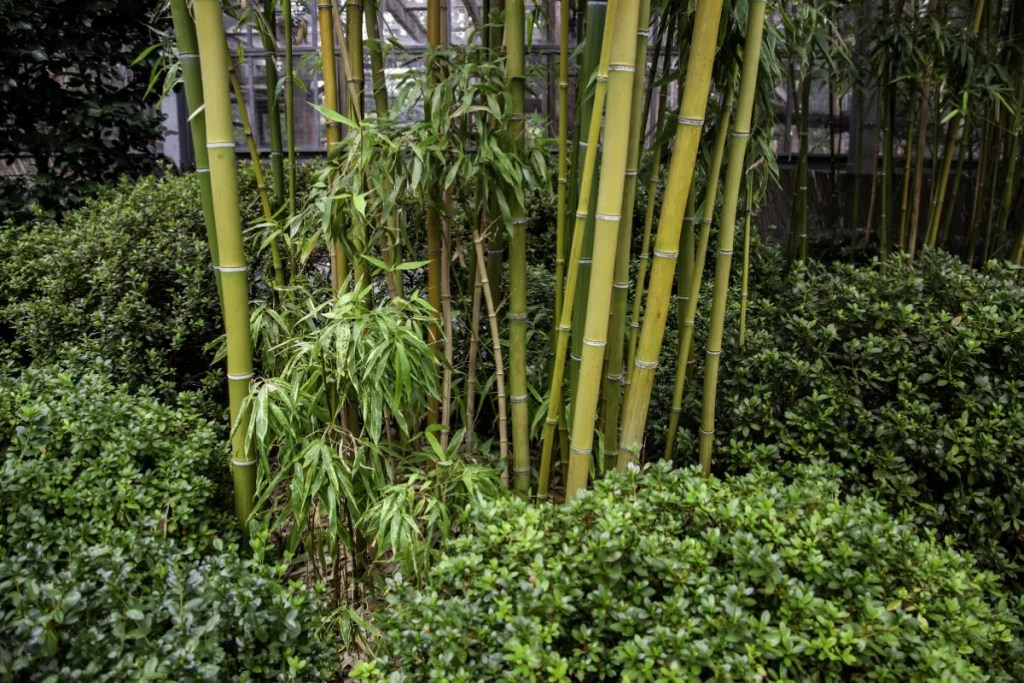
Bamboo Martial Art: A Harmony of Tradition and Strength
Introduction
In the dynamic world of martial arts, where tradition meets strength, Bamboo Martial Arts stands out as a captivating practice. This exploration takes us on a journey into the heart of this unique martial art, uncovering its roots, understanding its cultural significance, and revealing the myriad benefits it bestows upon those who embrace its disciplined path. From the bamboo-laden techniques to the cultural threads that weave through its practice, Bamboo Martial Art is a harmonious blend of tradition and physical prowess that continues to leave an indelible mark on the martial arts landscape.
Bamboo Martial Art
The term “Bamboo Martial Art” encapsulates a diverse range of martial arts forms that incorporate bamboo-based techniques, weaponry, and training methods.
History of Bamboo’s Use in Martial Arts
The history of using bamboo in martial arts is a fascinating journey that spans cultures and centuries. From ancient Asian practices to modern adaptations, bamboo has played a pivotal role in shaping martial arts techniques.
Ancient Beginnings:
Bamboo’s association with martial arts dates back centuries, finding its roots in various Asian cultures. Early martial artists recognized bamboo’s unique properties and began incorporating it into their training methodologies.
Weaponry Evolution:
Bamboo became a fundamental material for crafting weapons such as staffs, sticks, and training tools. Martial artists utilized bamboo weaponry for both offensive and defensive training, enhancing their skills in combat scenarios.
Cultural Symbolism:
Beyond its practical uses, bamboo holds cultural significance in martial arts traditions. Bamboo’s flexibility and resilience symbolize virtues like adaptability and strength, deeply embedded in martial arts philosophies.
Versatility in Techniques:
Martial arts practitioners explored bamboo’s versatility in developing a wide range of techniques. Bamboo’s lightweight yet durable nature allowed for the creation of intricate and dynamic movements in various martial arts forms.
Global Influence:
The use of bamboo in martial arts extends beyond Asia, influencing practices in different parts of the world. From Filipino martial arts like Arnis to the stick-fighting traditions in Africa, bamboo has left a global imprint on martial arts.
Modern Adaptations:
In contemporary martial arts, bamboo continues to play a crucial role. Modern training equipment, protective gear, and even competition weapons often incorporate bamboo elements, showcasing its enduring relevance.
Preservation of Traditions:
The use of bamboo in martial arts reflects a commitment to preserving cultural traditions. Martial artists recognize bamboo as not just a practical material but as a link to the historical and cultural foundations of their disciplines.
Purpose of Bamboo as a Training Tool

Enhancing Precision and Control:
Bamboo serves as a training tool to refine the practitioner’s precision and control. Training with bamboo weapons, such as staffs and sticks, hones the ability to execute techniques with accuracy and finesse.
Developing Speed and Agility:
The lightweight nature of bamboo training tools contributes to the development of speed and agility. Practitioners learn to move swiftly and responsively, a crucial aspect in martial arts combat.
Simulating Realistic Scenarios:
Bamboo’s adaptability allows for the creation of training tools that simulate realistic combat scenarios. Sparring with bamboo weapons provides a dynamic training experience, preparing practitioners for diverse situations.
Building Muscle Memory:
Regular practice with bamboo reinforces muscle memory, enabling practitioners to instinctively execute techniques. The repetitive nature of training instills a level of proficiency that becomes second nature in combat situations.
Cultivating Discipline and Focus:
The use of bamboo in training requires a high level of discipline and focus. Practitioners must concentrate on executing techniques accurately, fostering mental discipline and mindfulness.
Promoting Adaptability:
Bamboo’s varied applications in training promote adaptability. Practitioners become adept at adjusting their techniques based on the specific characteristics of bamboo, preparing them for diverse combat scenarios.
Why Bamboo is Used in Martial Art?
Bamboo’s inclusion in martial arts is not arbitrary; its unique properties, including strength, flexibility, and cultural symbolism, make it an ideal medium for both training and combat.

Strength and Durability:
- Bamboo’s natural strength and durability make it an ideal material for martial arts applications.
- It withstands the impact and stress of training, providing a reliable medium for both offensive and defensive techniques.
Flexibility:
- The inherent flexibility of bamboo allows for the execution of intricate movements and techniques.
- Martial artists benefit from the dynamic nature of bamboo, enhancing the fluidity of their forms and strikes.
Lightweight Nature:
- Bamboo’s lightweight composition makes it easy to handle and maneuver during training.
- Martial artists can practice for extended periods without excessive strain, promoting agility and speed in their movements.
Cultural Symbolism:
- Bamboo holds deep cultural significance in many martial arts traditions.
- Its qualities, such as resilience and adaptability, align with the philosophical principles of martial arts, creating a symbolic connection between the practitioner and their discipline.
Versatility in Weaponry:
- Bamboo serves as a versatile material for crafting various martial arts weapons, including staffs and sticks.
- Its adaptability allows for the creation of weapons that challenge practitioners in both traditional and modern contexts.
Eco-Friendly and Sustainable:
- Bamboo’s sustainability aligns with the growing emphasis on eco-friendly practices in martial arts.
- As a fast-growing renewable resource, bamboo supports environmentally conscious training and equipment choices.
Cultural Tradition and Heritage:
- The use of bamboo in martial arts is often rooted in cultural traditions and historical practices.
- Martial artists embrace bamboo as a means of connecting with their heritage, fostering a sense of continuity in their training.
Enhanced Sensitivity and Control:
- Bamboo’s tactile qualities provide practitioners with enhanced sensitivity and control during training.
- This heightened awareness contributes to the development of precision and accuracy in executing techniques.
Adaptability in Training Tools:
- Bamboo’s adaptability extends to the creation of training tools, such as sparring staffs and padded sticks.
- These tools allow practitioners to simulate combat scenarios effectively while minimizing the risk of injury.
Aesthetic Appeal:
- Beyond its practical applications, bamboo adds an aesthetic dimension to martial arts equipment.
- The natural beauty of bamboo enhances the visual appeal of weapons and training gear, contributing to the overall experience of martial arts practice.
Different Types of Bamboo Martial Arts
Bamboo Martial Arts is a diverse and global phenomenon, with various styles and regional variations that showcase the adaptability and rich heritage of this unique discipline. Here, we explore different types of Bamboo Martial Arts, each with its distinct techniques, philosophies, and cultural influences:
Styles and Variations:
Arnis (Eskrima/Kali) – Philippines:
Arnis, also known as Eskrima or Kali, is a Filipino martial art that heavily incorporates bamboo sticks and other bladed weapons. Practitioners focus on fluid strikes, blocks, and disarmament techniques, showcasing the art’s effectiveness for self-defense.
Bataireacht – Ireland:
Bataireacht is an Irish martial art that historically involved the use of shillelaghs, wooden sticks often made from blackthorn wood. While not exclusively bamboo, Bataireacht highlights the adaptability of stick-based martial arts across different cultures.
Kendo – Japan:
Kendo, the “Way of the Sword” in Japan, utilizes bamboo shinai (bamboo swords) and protective armor. Practitioners engage in sparring matches, emphasizing precision, discipline, and respect for opponents.
Silambam – India:
Silambam is a traditional Indian martial art that incorporates bamboo staffs and sticks. Practitioners perform intricate twirling movements and strikes, showcasing the art’s roots in ancient Indian warfare.
Bando – Myanmar (Burma):
Bando, a martial art from Myanmar, includes the use of bamboo sticks as part of its extensive training regimen. The art encompasses strikes, kicks, and grappling techniques, emphasizing both armed and unarmed combat.
Benefits of Bamboo Martial Art
Physical Fitness
Engaging in bamboo martial arts cultivates physical fitness, promoting strength, agility, and cardiovascular health. The unique movements and stances contribute to overall body conditioning.
Mental Discipline
Beyond the physical, bamboo martial arts fosters mental discipline, requiring practitioners to focus, strategize, and cultivate a resilient mindset. The mental fortitude developed in training transcends into daily life.
Cultural Connection
Practicing bamboo martial arts fosters a deep connection to cultural roots. It becomes a vessel for preserving traditions, passing on ancient wisdom, and fostering a sense of identity among practitioners.
How to Get Started with Bamboo Martial Arts
The journey into bamboo martial arts begins with finding a qualified instructor. Seek those with expertise, a deep understanding of the art’s cultural roots, and a commitment to imparting knowledge.
For beginners, mastering bamboo martial arts starts with foundational techniques, controlled movements, and gradual progression. Patience and consistency are key to unlocking the art’s full potential.
Conclusion
Bamboo martial art’s significance lies not just in its physicality but in its embodiment of cultural heritage, mental discipline, and a connection to nature. It stands as a testament to the enduring appeal of traditional martial arts. Whether drawn to its cultural richness, physical benefits, or the allure of mastering ancient techniques, enthusiasts are encouraged to embark on a journey that harmonizes tradition and strength.






